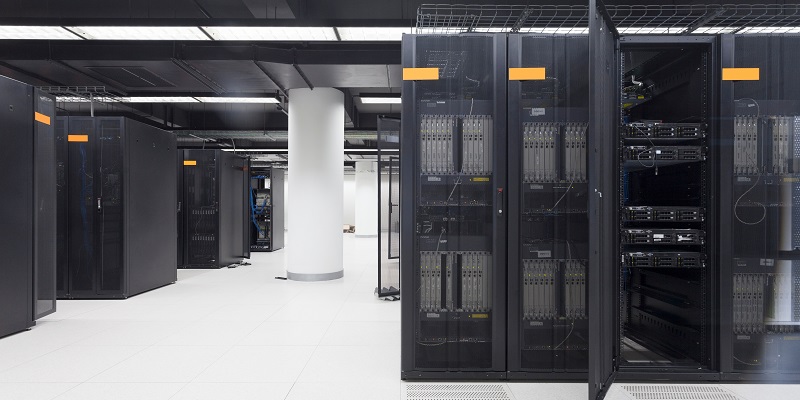In today’s digital age, data centers play a critical role in supporting our increasingly connected world. However, the energy consumption of these centers, particularly from servers, poses significant environmental challenges. To mitigate this impact and achieve carbon-neutral sustainability targets, companies are turning their focus toward enhancing server efficiency. This article explores various strategies and factors to consider to maximize server efficiency and ultimately reduce energy consumption in data centers.
Factors to consider for server efficiency
1. Upgrade to a Newer Server Generation
One of the most effective ways to improve server efficiency is by upgrading to the latest server models. Technological advancements result in higher performance and improved energy efficiency, making newer servers more environmentally friendly. By retiring outdated hardware and replacing it with energy-efficient alternatives, companies can significantly reduce power consumption and operational costs.
2. Choose servers with high computer capacity
When selecting servers, it is essential to consider their compute capacity, which is typically measured in terms of transactions per second. Servers with high compute capacity can handle more tasks in a given timeframe, thus reducing the need to deploy multiple servers. By consolidating workloads onto fewer, more powerful servers, companies can enhance operational efficiency and reduce energy consumption.
3. Opt for Servers with High Core Count
Another crucial factor in server efficiency is the number of cores. Servers with a higher core count can handle more simultaneous tasks, allowing for better workload distribution and faster processing. By utilizing servers with a high core count, companies can optimize resource allocation, reduce server sprawl and, consequently, decrease energy consumption.
Reduce Core CPU Voltage and Frequency
Modern servers come equipped with power management features that allow for dynamic adjustment of core CPU voltage and frequency. By reducing these parameters as the server’s utilization increases, companies can ensure energy is utilized efficiently. This approach optimizes power consumption and cooling requirements, resulting in significant energy savings without compromising performance.
Move Unneeded Cores to Idle State
Servers often operate with multiple cores, with varying levels of utilization. By moving idle cores to an idle state, companies can temporarily disable them, thereby reducing energy consumption. This power-saving technique ensures that only the necessary cores remain active, further improving server efficiency and reducing carbon footprint.
Impact of Server Age on Energy Efficiency
It’s no surprise that older servers are less energy efficient compared to their modern counterparts. As technology evolves, server manufacturers integrate newer, power-saving components and design improvements into their products. The increased energy efficiency of new servers not only provides cost savings but also aids in achieving sustainability goals. Upgrading to newer server generations can result in substantial energy savings over time.
Utilization Rates and Inconsistent Application Usage
While server efficiency is vital, it is equally important to consider the utilization rates of applications. In many cases, applications do not consistently run, leading to suboptimal server resource utilization. Companies must analyze and optimize application usage to streamline operations and maximize server efficiency. By identifying patterns and adjusting server resources accordingly, organizations can ensure optimal energy usage and reduce unnecessary power consumption.
Combining Increased Utilization and Server Upgrades
Maximizing Impact through Increased Utilization and Server Upgrades:
To maximize server efficiency, it is essential to combine efforts to increase application utilization rates while also upgrading servers to the latest models. By optimizing resource management and investing in energy-efficient hardware, companies can achieve substantial improvements in both application performance and energy consumption. This combination approach ensures long-term sustainability while enhancing the overall efficiency of data center operations.
Buying More Powerful Hardware for Improved Energy Efficiency
Contrary to conventional beliefs, investing in more powerful hardware can contribute to improved energy efficiency. More powerful servers can handle higher workloads without straining resources, resulting in enhanced energy utilization. By leveraging robust hardware capabilities, companies can achieve optimal performance levels while reducing their environmental impact.
Power Management Features for Improved Efficiency
The integration of power management features in modern servers provides a significant advantage in terms of energy efficiency. According to research conducted by Uptime, these features can boost server efficiency by at least 10%. Leveraging dynamic power adjustments, such as reducing voltage and frequency during periods of low utilization, can yield substantial energy savings without compromising performance.
As companies strive to meet carbon-neutral sustainability targets, server efficiency emerges as a critical focus area. Upgrading to newer server generations, prioritizing high compute capacity, utilizing power management features, and combining increased utilization with hardware upgrades are essential strategies to maximize server efficiency. By implementing these measures, companies can minimize energy consumption, reduce costs, and make substantial progress towards achieving their environmental goals while supporting a more sustainable future.

